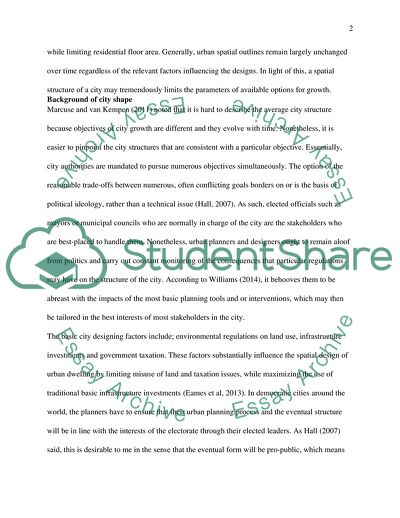Cite this document
(Physical Form and Configuration of Cities Essay Example | Topics and Well Written Essays - 1750 words, n.d.)
Physical Form and Configuration of Cities Essay Example | Topics and Well Written Essays - 1750 words. https://studentshare.org/design-technology/1867776-topic-title-how-important-is-the-physical-form-and-configuration-of-cities-what-are-the-implications-go-the-answer-to-this-for-how-we-should-try-to-steer-urban-change-and-development-in-the-future
Physical Form and Configuration of Cities Essay Example | Topics and Well Written Essays - 1750 words. https://studentshare.org/design-technology/1867776-topic-title-how-important-is-the-physical-form-and-configuration-of-cities-what-are-the-implications-go-the-answer-to-this-for-how-we-should-try-to-steer-urban-change-and-development-in-the-future
(Physical Form and Configuration of Cities Essay Example | Topics and Well Written Essays - 1750 Words)
Physical Form and Configuration of Cities Essay Example | Topics and Well Written Essays - 1750 Words. https://studentshare.org/design-technology/1867776-topic-title-how-important-is-the-physical-form-and-configuration-of-cities-what-are-the-implications-go-the-answer-to-this-for-how-we-should-try-to-steer-urban-change-and-development-in-the-future.
Physical Form and Configuration of Cities Essay Example | Topics and Well Written Essays - 1750 Words. https://studentshare.org/design-technology/1867776-topic-title-how-important-is-the-physical-form-and-configuration-of-cities-what-are-the-implications-go-the-answer-to-this-for-how-we-should-try-to-steer-urban-change-and-development-in-the-future.
“Physical Form and Configuration of Cities Essay Example | Topics and Well Written Essays - 1750 Words”. https://studentshare.org/design-technology/1867776-topic-title-how-important-is-the-physical-form-and-configuration-of-cities-what-are-the-implications-go-the-answer-to-this-for-how-we-should-try-to-steer-urban-change-and-development-in-the-future.


